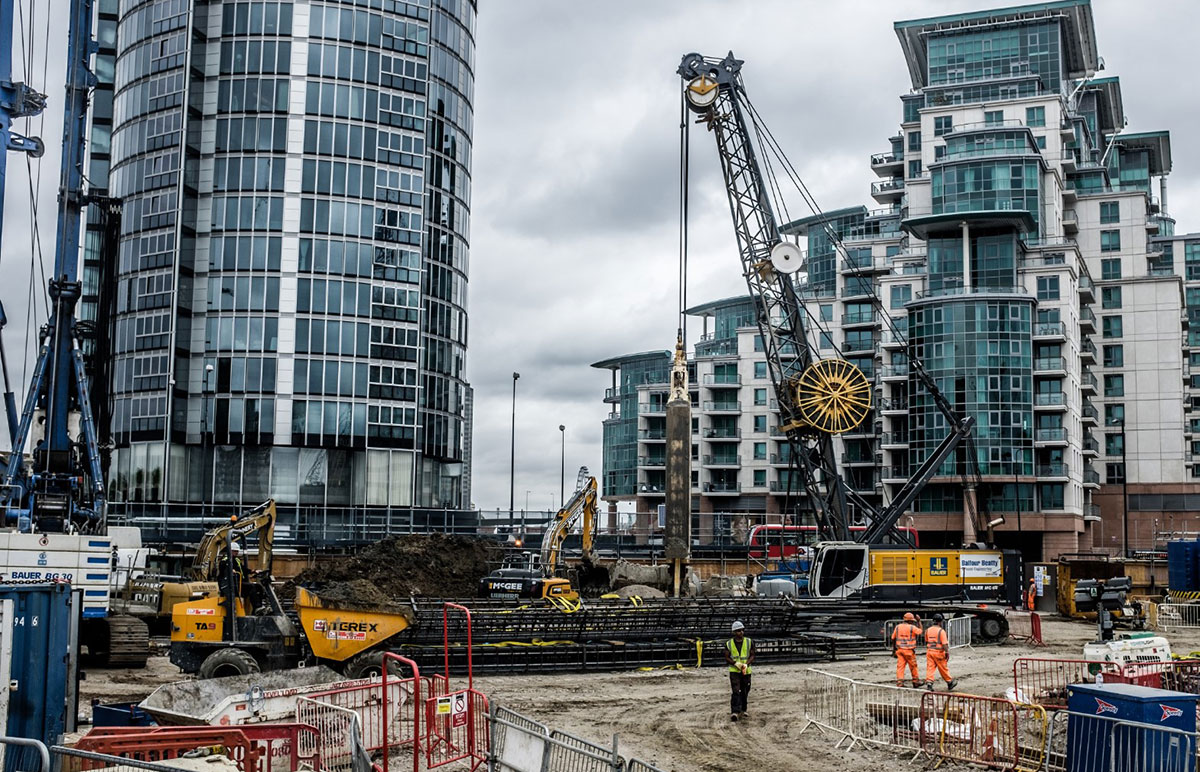Little Known Facts About Geotheta.
Table of ContentsNot known Incorrect Statements About Geotheta Not known Factual Statements About Geotheta The 9-Minute Rule for GeothetaThe 10-Second Trick For GeothetaThe 10-Minute Rule for Geotheta

They perform site investigations, accumulate samples, carry out lab tests, and evaluate data to assess the suitability of the ground for building and construction tasks - Engineer of Record. Based upon their searchings for, geotechnical engineers provide referrals for foundation design, incline stability, maintaining structures, and reduction of geotechnical hazards. They collaborate with various other professionals, such as designers, structural engineers, and building teams, to make sure that geotechnical factors to consider are integrated into the total project layout and execution
By analyzing the behavior and properties of soil and rock, they can determine potential geotechnical hazards such as landslides, soil settlement, or slope instability. Their knowledge helps prevent failures or crashes that could endanger lives and building. Below are some thorough obligations and duties of a geotechnical designer: Website Examination: Geotechnical engineers conduct site examinations to gather data on subsurface conditions.
They analyze the information to understand the homes and actions of the dirt and rock, including their stamina, leaks in the structure, compaction attributes, and groundwater conditions. Geotechnical Analysis and Layout: Geotechnical engineers analyze the information accumulated throughout website examinations to examine the stability and viability of the site for building and construction tasks. They do geotechnical calculations and modeling to assess variables such as birthing capacity, settlement, slope stability, side earth pressures, and groundwater circulation.
An Unbiased View of Geotheta
Structure Design: Geotechnical engineers play a crucial role in designing structures that can securely support the desired framework. They evaluate the soil problems and lots needs to determine the appropriate structure type, such as shallow structures (e.g., footings), deep foundations (e.g (https://giphy.com/channel/geotheta)., heaps), or specialized strategies like soil enhancement. They take into consideration aspects such as negotiation limits, birthing capacity, and soil-structure communication to develop optimum foundation designs
They examine building and construction strategies, display website activities, and perform field evaluations to validate that the design recommendations are followed. If unpredicted geotechnical problems develop, they examine the circumstance and provide referrals for removal or changes to the style. Danger Analysis and Reduction: Geotechnical designers assess geotechnical hazards and risks connected with the project site, such as landslides, liquefaction, or dirt erosion.

Collaboration and Communication: Geotechnical designers function very closely with other experts associated with a task, such as architects, architectural engineers, and building teams. Efficient interaction and partnership are important to incorporate geotechnical considerations right into the overall project style and building procedure. Geotechnical designers provide technical knowledge, solution questions, and ensure that geotechnical demands are met.
Getting My Geotheta To Work
Here are some types of geotechnical engineers: Structure Engineer: Structure designers specialize in designing and evaluating structures for frameworks. They assess the dirt problems, load demands, and website characteristics to determine the most suitable structure kind and layout, such as superficial structures, deep structures, or specialized methods like pile foundations.
They assess the factors influencing incline stability, such as soil properties, groundwater problems, and slope geometry, and establish methods to stop slope failings and alleviate dangers. Quake Engineer: Quake designers focus on examining and creating structures to withstand seismic pressures. They evaluate the seismic threat of a website, assess dirt liquefaction capacity, and develop seismic design requirements to make sure the safety and durability of structures during quakes.
They do area screening, gather examples, and examine the collected information to identify the soil residential properties, geologic formations, and groundwater problems at a site. Geotechnical Instrumentation Designer: Geotechnical instrumentation designers click here to find out more concentrate on surveillance and determining the actions of dirt, rock, and structures. They set up and keep instrumentation systems that keep an eye on variables such as dirt settlement, groundwater degrees, incline motions, and architectural displacements to analyze performance and supply very early warnings of prospective concerns.
The Geotheta PDFs
They conduct examinations such as triaxial examinations, combination examinations, straight shear examinations, and permeability tests to gather data for geotechnical evaluation and layout. Geosynthetics Engineer: Geosynthetics engineers specialize in the style and application of geosynthetic materials, such as geotextiles, geogrids, and geomembranes. They use these products to enhance soil security, reinforce inclines, give drainage services, and control erosion.
They often tend to be investigatory individuals, which indicates they're intellectual, reflective, and inquisitive. They wonder, methodical, sensible, logical, and sensible. Several of them are also social, implying they're kind, generous, participating, individual, caring, helpful, understanding, skillful, and pleasant. Does this seem like you? Take our complimentary occupation examination to discover if geotechnical engineer is one of your leading job suits.
In the office setting, geotechnical designers make use of specialized software program tools to carry out calculations, produce styles, and evaluate information. They prepare reports, testimonial job specifications, communicate with clients and team members, and coordinate job tasks. The workplace setting supplies a favorable environment for study, evaluation, and collaboration with various other professionals associated with the job.
The Only Guide for Geotheta
They frequently go to task sites to carry out website examinations, examine geotechnical conditions, and gather information for evaluation. These brows through include taking a trip to various locations, occasionally in remote or challenging surfaces. Geotechnical designers may perform soil sampling, conduct tests, and screen building and construction activities to make sure that the geotechnical facets of the project are being implemented properly.
Geotechnical designers additionally function in specialized geotechnical research laboratories. Geotechnical research laboratory designers function extensively in these environments, dealing with testing tools, running tools, and videotaping data.